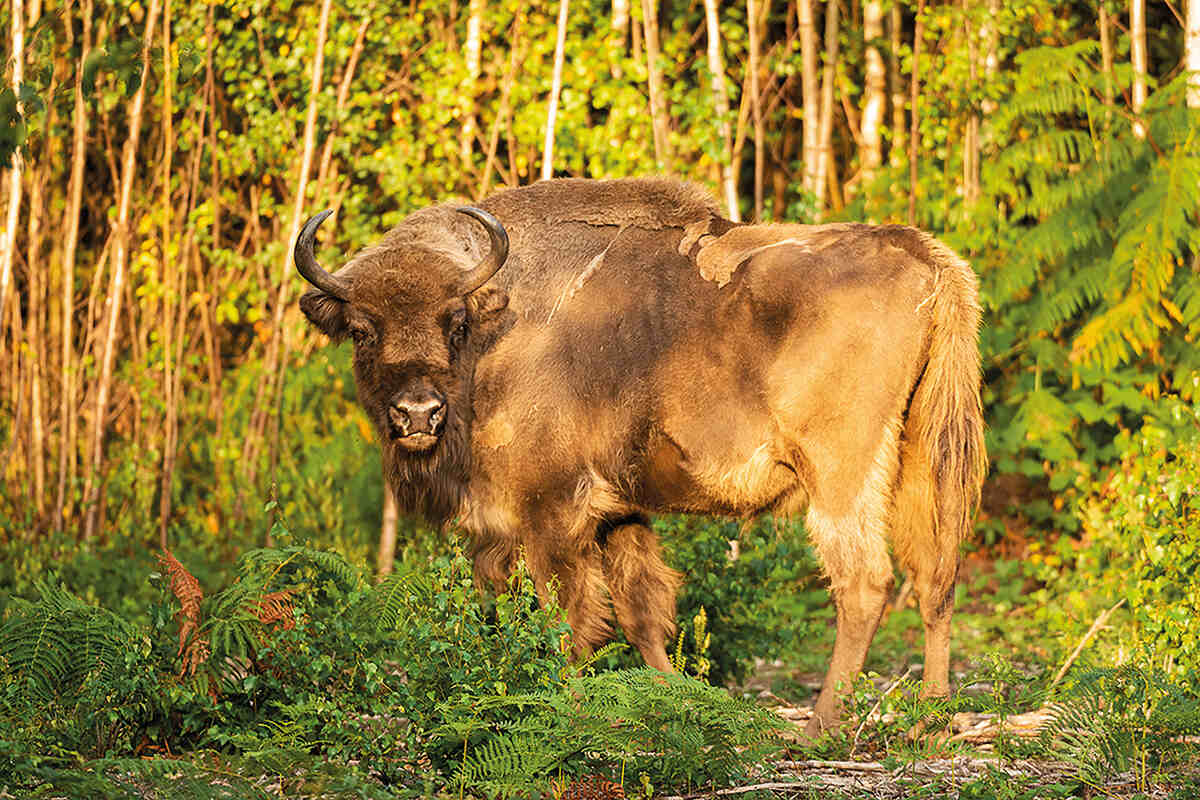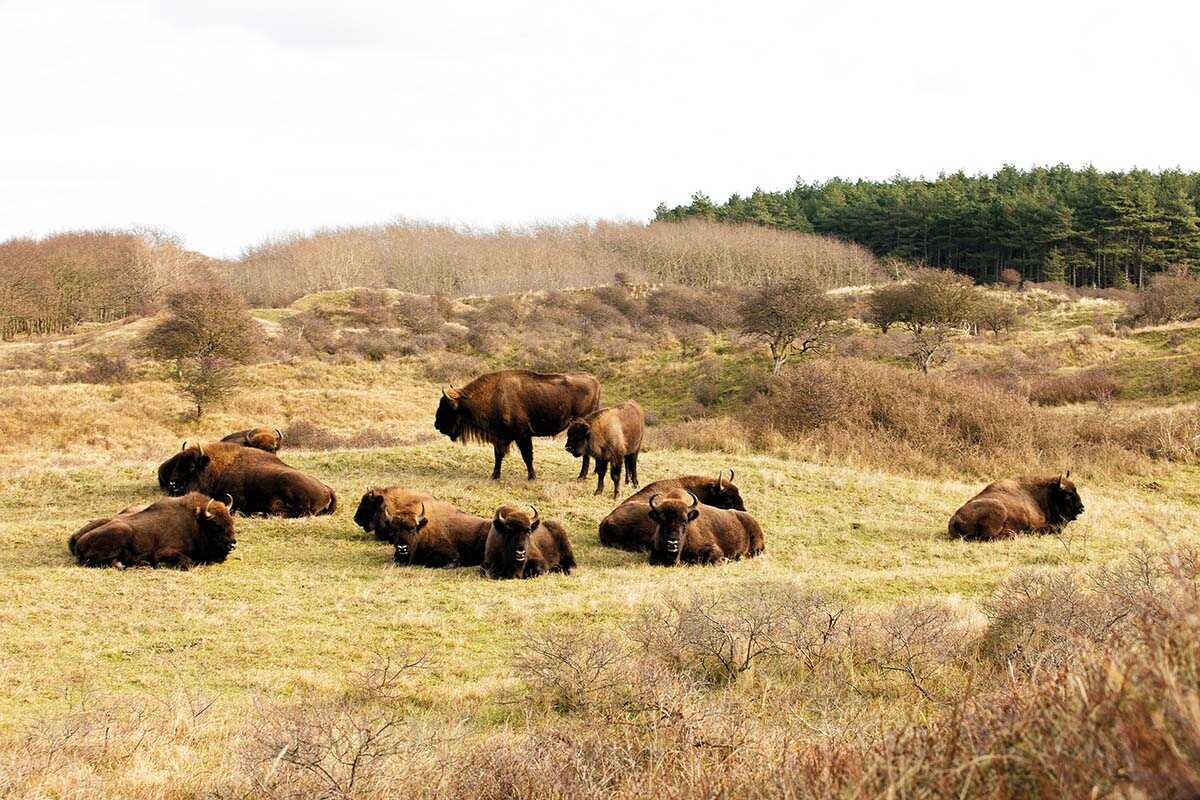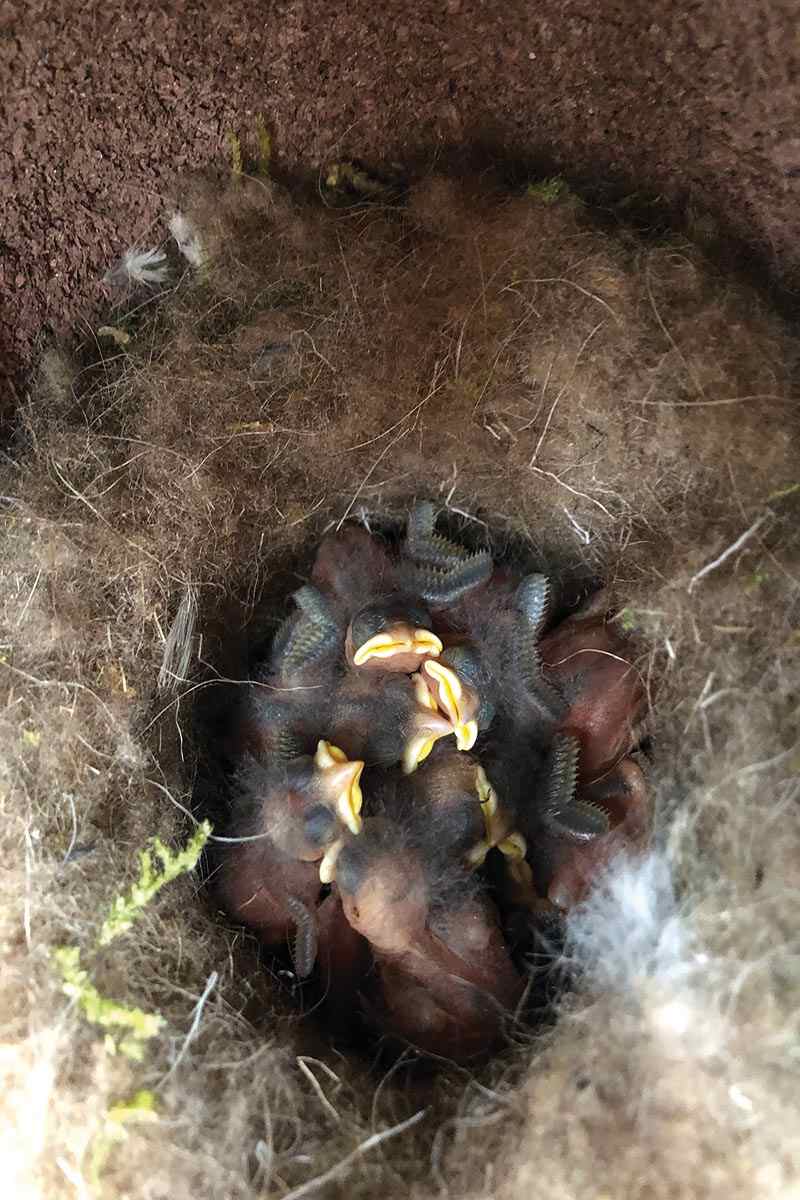
Britain’s first bison in 6,000 years have already begun to make their mark on their new woodland home
By
People often ask me, “how much does a bison cost?” A bison is free!’
Donovan Wright, one of Britain’s very first bison rangers, is introducing visitors to Kent’s newest residents. It has been two months since three European bison left their corral and entered Blean Woods near Canterbury, and they’re already getting stuck into their role as sustainable ecosystem engineers, managing the woodlands by doing what bison do best: grazing, dust bathing and stripping bark from the trees.
The bison (one matriarch and two youngsters) were introduced in July to help restore the ancient Blean woodland, which has long been used for timber and re-planted with non-native conifers. No longer commercially viable, it served as the ideal setting for a rewilding project that will hopefully create a healthier, more varied woodland – one that will be more resilient to the climate crisis and will boost biodiversity.
Of course, bison aren’t really free – the Wilder Blean project was awarded £1.125 million from the People’s Postcode Lottery Dream Fund to cover the enormous initial costs. ‘This kind of project isn’t an option open to everyone,’ admits Stan Smith, wilder landscapes manager at Kent Wildlife Trust. Aside from the more obvious expenses – building the enclosure, the rangers’ salaries – a huge team effort has been mobilised.
Part of that effort has been the baseline monitoring programme needed to assess the impact of the project. Monitoring teams have been beavering away for two years, looking at what’s underneath the ground, what’s on it and what’s in the air, using drones and satellite imagery to map changes in the soil and vegetation. But the potential benefits of the project are worth it: the carbon investment, ecosystem recovery and reduced risk of flooding, not to mention the income from ecotourism, are projected to add up and significantly offset the costs of the project.

The work is already paying off. In less than two months, the bison have made a surprising difference. ‘I never expected it to be so quick,’ says Wright. ‘We have seen them create a network of paths opening up trails of up to a metre wide. And we’re not the only ones using them. I have seen foxes and rabbits, and a slow worm sunbathing on one.’ The bison have also been debarking the trees, an activity not seen in other herbivores, which will leave deadwood for stag beetles and the woodpeckers that feed on them. Wright even saw the matriarch walk out with ‘a massive wig of rhododendrons’ (a highly invasive species) that she had torn from the ground. ‘No-one ever expected them to touch the rhododendrons.’
Bison are a highly adaptable species, so perhaps it’s not that surprising that they’re already doing so well. Although they’re thought to be forest-dwelling animals, other bison-reintroduction projects in the Netherlands suggest that that may not always have been the case. ‘We were told, “The bison is the king of the forest, are you sure you want to put them in the dunes?”’ says Esther Rodriguez, nature and recreation advisor at non-profit organisation Puur Water & Natuur. In 2007, three bison were released into a closed-off area of sand dunes and forest known as Kraansvlak, on the Dutch coast, to help diversify the vegetation of Zuid-Kennemerland National Park, on the west coast of New Holland. ‘Since then, we’ve been breaking this myth,’ she says, adding that most of the time, the bison prefer to stay in the open areas. ‘Perhaps it’s time we should rethink this, and consider whether they were first pushed into the forest by human activity, or the First and Second World Wars.’
What began as a pilot project in Zuid-Kennemerland has expanded to three other sites across the Netherlands: Veluwe (dry heather, sand drifts and forest plantations) and Maashorst (forests, heaths and open grasslands) in 2016, and Slikken van de Heen (dried and desalinated sandbanks and salt marshes) in 2020.

The Kraansvlak project saw results very quickly, as the bison mowed back encroaching grasses from the dunes and opened up the shrubbery, wallowing in sand pits and creating microhabitats for endemic lizards and other dune species. Blue tits and great tits in the area show a clear preference for using bison fur to line their nests. Since then, the herd has expanded and, in 2017, a walking path was established through the bison area.
For now, the Blean Woods bison enclosure remains closed to the public. Wright says he would love to see guided safaris through the wood, but Rodriguez cautions that each project is different and must advance step by step; there are no copy-and-paste solutions. Kraansvlak faces the unique challenge of being very close to urban areas; the national park receives up to four million visitors per year. ‘Not everyone is educated about animals and how to behave around them,’ says Rodriguez. ‘Some people still don’t know the difference between bison and cattle, and we’ve been running this project for 15 years.’
In Kent, introducing the bison has led to new restrictions on where walkers can go throughout a woodland that’s well used by local people. ‘We’re having ongoing conversations with local communities and trying to be as unobstructive as possible,’ says Smith, ‘but for nature to be truly wild it will affect us, where we go and what we can do.’ Luckily, it appears that, so far at least, the project has been widely embraced by the local community.




